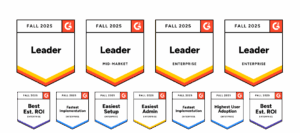How to Ease Your Finance Team into Transformation Waters – Without Abandoning Your Excel Lifejacket
Blog post
Share
If your month-end bank reconciliations still run on an Excel template or workbook, you’re in good company. Despite years of working on digital transformation, many finance organizations still rely on spreadsheets for critical work. Additionally, there are reported cases of large, all-at-once transformations that have missed the mark. Boston Consulting Group’s research shows roughly 70% of digital transformations fall short of their objectives if a company is not yet ready to commit fully. So it’s understandable how for some, thinking about a direct dive from Excel to a completely new process can be daunting.
This blog outlines a pragmatic path: keep the spreadsheet account reconciliation workflows your team already knows, but wrap them with automation, controls, and auditability. Adra Balancer’s spreadsheet-based reconciliations feature can bridge the gap—letting you dip your toe into automation without asking everyone to abandon their templates overnight.
Before You Start the Transformation
Digital programs often fail for three reasons: people, process, and technology. If you don’t have the time to devote to change, the buy-in from leadership, or the right tools, this increases your risk of failure. That’s why BCG recommends tackling transformation in bite‑sized phases with clear change‑management guardrails. Start with a fully integrated strategy in just one area of your close first, like your balance sheet reconciliations.
A Techradar article found 90% of organizations still rely on spreadsheets for vital business data. For many teams it’s not a realistic goal to rip-and-replace them entirely. But ensuring the data on your reconciliation spreadsheets is accurate and consistently formatted is a start in the right direction. This can significantly improve outcomes.
Process redesign can often compete with “run the business” tasks. The likelihood you’re going to find time during a close period to implement new processes is almost certainly unlikely. But adding incremental automation to your existing spreadsheet processes can reduce risk, costs, and time to close—which becomes an important springboard for future changes.
Bridge the Gap: Adra Balancer’s Spreadsheet-Based Reconciliations
You don’t have to throw away your Excel templates or rebuild every model. Adra Balancer lets you tag and upload the spreadsheets you already use and then adds security, workflow, and automation around them. You can keep the layout and formulas while gaining enterprise‑grade controls. By uploading recs to Balancer, you can gain benefits that spreadsheets can’t offer like:
- Auto‑reconciled low‑risk or high‑volume accounts
- Tracked changes and a time‑stamped audit trail of comments, approvals, and calculations
- Centralized supporting documentation and notes
- A direct connection to your ERP so that your balances align automatically—without disrupting your spreadsheet logic or formatting
- A reduced close cycle by up to 70%
Crawl‑Walk‑Run: A Low‑Risk Roadmap
Bank reconciliations are structured, repetitive, and ideal for a first win when it comes to starting your digital transformation journey, especially if your team already runs reconciliations in an Excel file each period.
Crawl:
Inventory your spreadsheets in scope (bank, cash, intercompany, accruals). Ensure they are all following the same basic governance and structure and that you’re ready to start making incremental process changes. A consistent structure will make your upload smoother and your audit trail cleaner.
Walk:
Tag and upload your first reconciliation spreadsheet to Adra to centralize your data. Confirm core fields like GL account, bank balance, dates, etc. Upload documentation, make notes for others, and learn how to view reports and audit trails. Get comfortable using the auto-reconcile feature for low-risk or high-volume accounts to save extra time.
Run:
Scale to use the same process for other spreadsheets like accruals and intercompany accounts, connect more entities/locations into one workspace, and deepen ERP integration. Add your journal entries to enhance automation even further.
Migrating some of your manual processes to automated actions in manageable steps makes it more likely that your success will last and scale. Allowing employees to get used to one process at time will ensure they’re on board with transformation as well. And as you start to become more comfortable, you can start to set measurable targets and goalposts like close-cycle reduction times, percentage of auto-reconciled items, exception rates, and shorter audit times. You’ll also be able to address any bottlenecks in the process as they come up with a stronger foundation of data.
Building a Bridge from Spreadsheets to Automation & Control
For many finance teams, moving from Excel to an entirely new platform overnight is not practical or realistic. Spreadsheets remain pervasive—sometimes for good reasons—and the safest path is to stabilize what you have and then layer in automation where it delivers immediate value.
Adra Balancer with its spreadsheet‑based reconciliations offers that bridge: keep your templates (from your everyday bank reconciliations to more complex Excel workbooks) while gaining centralization, auditability, and targeted automation that speeds the close. It’s a tangible first step that improves control today and will prepare your team for deeper digital transformation tomorrow.
Written by: Elizabeth Connors


